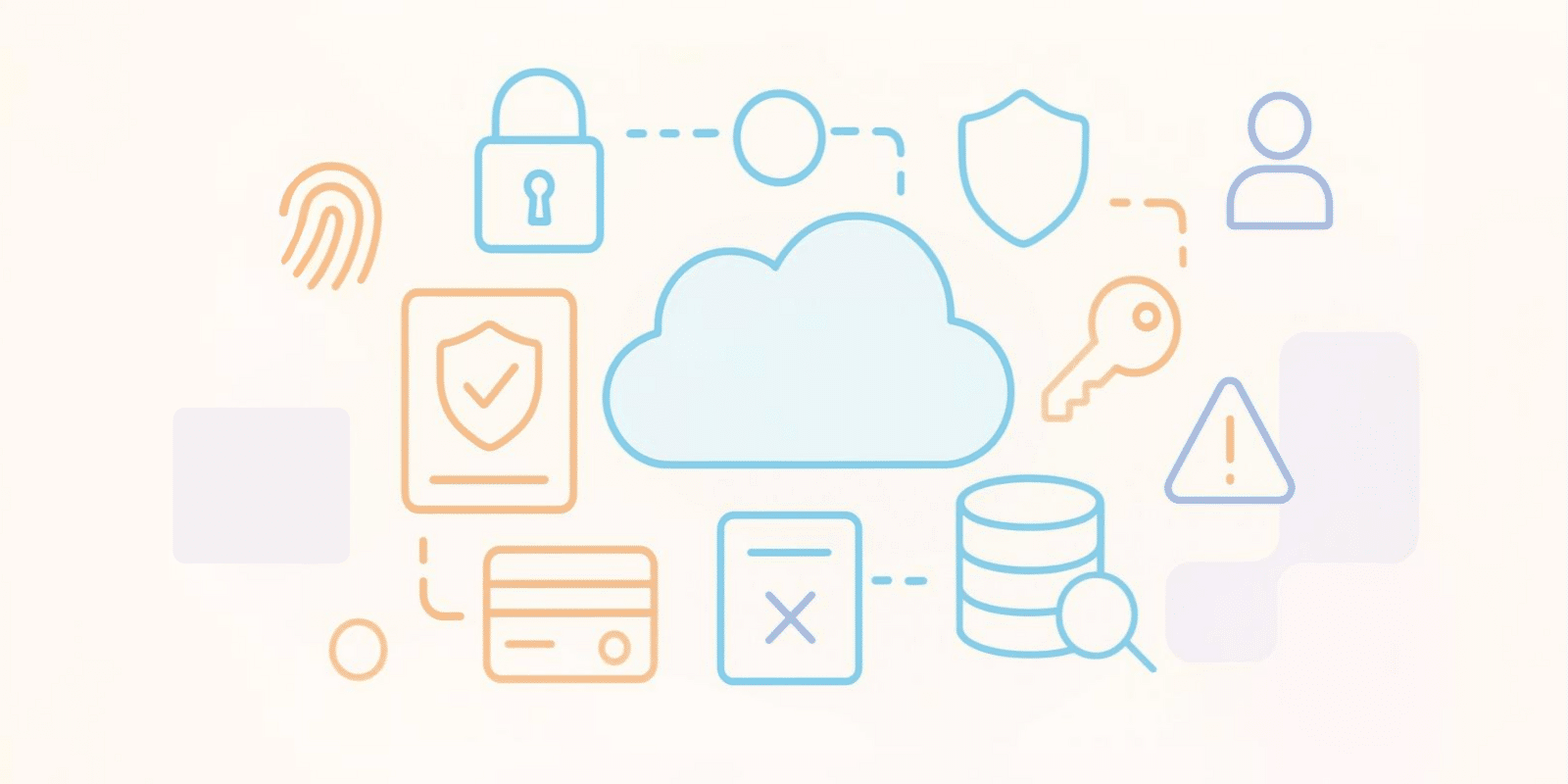Plăți SaaS
Ce este evaluarea riscurilor de plată SaaS?

Ce este o evaluare a riscurilor de plată SaaS?
Evaluarea riscurilor de plată SaaS este procedura continuă de detectare, evaluare și reducere a posibilelor probleme din serviciile SaaS care gestionează date sensibile și tranzacții financiare.
Este important pentru menținerea continuității afacerii, asigurarea conformității cu reglementări precum PCI DSS și protejarea informațiilor private împotriva pierderii și furtului. Aceste evaluări, prin identificarea și abordarea abonamentelor software inutile sau ineficiente, pot avea impact asupra cheltuielilor.
Deoarece se anticipează că aproape toate companiile vor utiliza soluții SaaS, este mai important ca niciodată să existe un plan solid de gestionare a riscurilor pentru a evita risipa financiară și a menține securitatea operațională.
De ce este esențială realizarea unei evaluări a riscurilor de plată SaaS pentru organizații?
Acest lucru este important deoarece ajută companiile să protejeze datele clienților și poate preveni pierderile financiare.
Prin identificarea punctelor slabe în manipularea datelor și procedurile de plată, aceste evaluări permit unei companii să prevină pericole precum frauda și încălcările de date.
Un plan de răspuns la incidente trebuie să includă o evaluare a riscurilor pentru a se asigura că echipa dumneavoastră poate răspunde prompt în cazul unui incident de securitate. Deoarece SaaS este atât de utilizat, menținerea securității și conformității necesită o abordare puternică de evaluare.
Care sunt riscurile comune de plată asociate cu SaaS?
Securitatea datelor, integritatea sistemului și procesarea plăților sunt frecvent identificate ca zone de risc. Gestionarea acestor aspecte se referă la posibilele implicații pentru o afacere.
Riscuri frecvente:
- Acces neautorizat la date
- Autentificare slabă
- Configurări greșite ale sistemului
- Încălcări de date
- Încălcări ale conformității (de ex., GDPR, PCI DSS)
- Eșecuri la plată, în special în abonamentele recurente
Consecințe potențiale:
- Pierderi de venit și penalități financiare
- Rate mai mari de pierdere a clienților
- Costuri crescute de achiziție a clienților
- Daune aduse confidențialității datelor, integrității sistemului și disponibilității serviciilor
Care sunt etapele cheie implicate în realizarea unei evaluări a riscurilor de plată SaaS?
O evaluare temeinică urmează un proces definit pentru a aborda domeniile cheie.
- Formați o echipă și faceți inventarul: Formați o echipă multifuncțională și creați o listă completă a tuturor sistemelor SaaS care gestionează plățile.
- Identificați și clasificați riscurile: Identificați riscurile comune specifice plăților SaaS și clasificați-le în funcție de sensibilitatea datelor, impactul asupra afacerii și regulile de conformitate.
- Analizați și prioritizați amenințările: Analizați nivelurile de amenințare și prioritizați-le în funcție de probabilitatea de apariție și de daunele potențiale pe care le-ar putea cauza.
- Implementați strategii de atenuare: Implementați planuri pentru a minimiza amenințările identificate. Aceasta include pași cruciali precum criptarea datelor sensibile, utilizarea unor controale stricte de acces și scanarea regulată pentru vulnerabilități.
- Monitorizați și Reevaluați: Monitorizați continuu performanța și reevaluați periodic profilurile de risc. Acest lucru contribuie la ajustarea strategiei dumneavoastră ca răspuns la amenințările în evoluție și la schimbările din mediul de afaceri, cu implicații pentru o protecție susținută.
Care sunt riscurile de conformitate legate de plată atunci când se utilizează SaaS?
Utilizarea SaaS pentru plăți prezintă considerații de conformitate legate de reglementările privind confidențialitatea și securitatea datelor. Pot exista costuri asociate cu neconformitatea.
Reglementările cheie includ:
Nerespectarea acestor standarde poate duce la sancțiuni financiare severe, prejudicii de reputație și întreruperi ale activității. Mediile SaaS prezintă considerații specifice pentru menținerea conformității, provenind din actualizări frecvente, cicluri rapide de implementare și distribuția datelor în diverse aplicații.
Cum atenuează o evaluare a riscurilor de plată riscurile asociate aplicațiilor SaaS?
Prin utilizarea unei abordări proactive, mai degrabă decât reactive, o evaluare a riscurilor de plată reduce riscurile.
Descrie o procedură definită pentru identificarea, evaluarea și atenuarea punctelor slabe înainte ca acestea să fie potențial exploatate. O abordare proactivă poate ajuta o companie să atenueze riscurile de securitate, dificultățile operaționale și pierderile financiare potențiale, care pot afecta continuitatea afacerii și încrederea clienților.
Procedura de evaluare trebuie revizuită frecvent pentru a reflecta riscurile în schimbare și modificările mediului de afaceri pentru a rămâne eficientă.
Concluzie
Evaluarea riscurilor plăților SaaS permite companiilor să identifice potențiale probleme, care pot duce la acțiuni corective ulterioare. Aceste verificări sunt esențiale pentru companiile SaaS când vine vorba de protejarea informațiilor sensibile. Monitorizarea continuă a companiilor SaaS se poate referi la respectarea de către acestea a unor cadre precum GDPR, PCI-DSS și HIPAA.